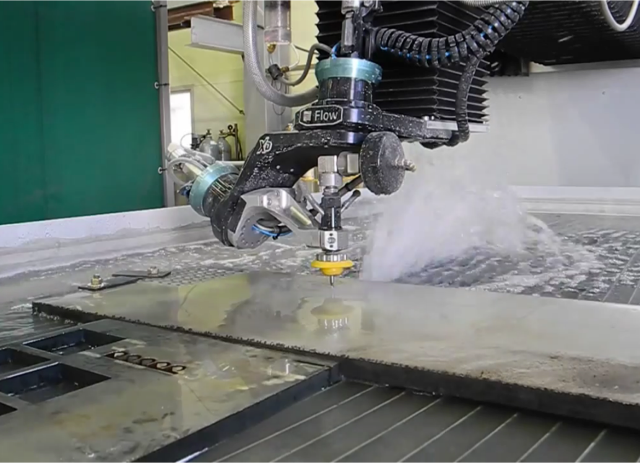
Waterjet cutting was originally conceived as a mining tool in the mid-1800’s, in a process known as hydraulic mining. In the 1930’s, a paper company in the USA produced a cutting machine that was used to cut paper with a narrow jet of water. By the 1950’s, water jet machines had been developed that could cut soft plastics. High pressure water jets capable of cutting metals were first developed in the aviation industry, but it was not until the 1970’s when commercial machines began to be practical and cost-effective.
Cutting with a water stream alone is possible with soft materials, but the addition of an abrasive turns a waterjet into a machine capable of cutting almost anything, even including glass and stone! Abrasive waterjets mix an abrasive material such as garnet or aluminum oxide with the water stream, which is then forced out of the jet at extremely high pressures and speed up to three times the speed of sound (760 meters per second).
Handling the extreme pressures and high velocities involved, while retaining a reasonable service life, required highly specialized materials. A critical innovation was a mixing tube made from a composite of ceramic and tungsten carbide. The focus of current work is on the design of jets smaller than 0.015 inches, so that even more precision can be obtained.
One of the most important benefits of water jet fabrication is the ability to cut materials without modifying their inherent structure, as there are no heat-affected zones, and the material is not mechanically stressed, and there is little loss of material. Another important feature of water jets is their enhanced ability to form 3-dimension geometric shapes. Very sharp corners, bevels, holes, and small internal radius cuts are all possible, with accuracies as high as .005 inches. With complex software and 5-axis cutting heads, extremely complex parts can be produced with little or no additional machining.
To see a 5-axis waterjet in action, watch check out:
View Video

